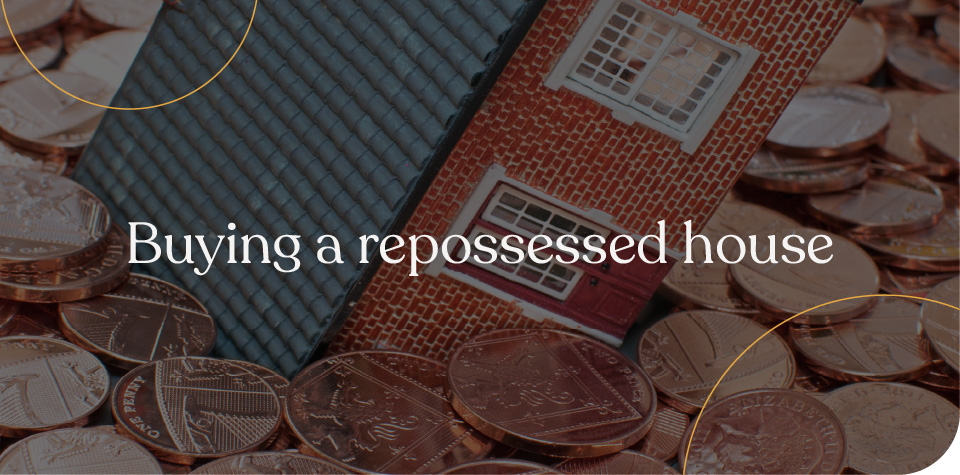
Buying a repossessed house or property in the UK – How to do it the easy way
It is estimated that 223,000 properties in the UK could be taken over by 2022 due to the economic effects of the pandemic. As mortgage lenders seek to minimise losses, most of these properties will be put on the market.
This can often translate to a lower price tag of up to 30% less than the market value. What does buying a repossessed house mean for a mortgage? What are the different financing options available, and how does it differ from purchasing a property? This guide will answer all these questions and more.
Enquire below for mortgage advice from our mortgage brokers regulated by the financial conduct authority. We have a few mortgage providers lending, so we can introduce you to the best mortgage lender to suit you.
Get started online
How can lenders sell repossessed houses?
Lenders should consider other options for selling property. This could include property auctions rather than relying solely on estate agents. It’s important not to lose more money on the property as it is unlikely that lenders will invest in making it sellable.
This can often translate to a lower market value, but it could also indicate that the property is in poor shape, has hidden deficiencies, or requires utility reconnection.
These factors should be considered when purchasing repossessed properties. Also, consider whether you can invest in renovations when buying a repossessed house and potentially taking on a below-market value mortgage.
Alternatively, if you purchase a repossessed house, a renovation mortgage could be what you’re looking for.
Buy a repossessed house at auction.
The UK’s auction house lists repossessed properties. They will usually share what is available one month before an auction. You can visit the property, review its legal pack, and arrange a home inspection. You should research as the owner may not be available to provide additional information.
If you decide to make a bid online or in person and buy the property, it will need to close within 28 days. A 10% deposit must also be paid that day. You can use your existing mortgage to help you secure the sale. A mortgage process can take anywhere from two to six weeks.
Auction finance is here to help. This bridging loan can be processed in 14 days but will have a higher interest than a traditional mortgage. It will also need to be paid off within one to 24 months, typically via a refinance or resale. This allows you to move on to a longer-term loan solution.
A mortgage broker can help you navigate the process of purchasing repossession properties at auction. They also provide support for applying for mortgage finance or auction financing.
An estate agent can help when buying a repossessed property
Although some estate agents may have a list of repossessed properties they are willing to sell, they do not usually advertise them. You will need to contact individual estate agents to find out what is available.
A mortgage broker could save you time and share the names of estate agents with whom they have repossessed properties.
You can apply for a conventional mortgage when buying a repossessed house. Then, confirm the sale by applying for a mortgage in principle. Be aware that a buyer may reject your offer if contracts are not exchanged within 28 days. This is not unusual as lenders must legally continue marketing the repossessed property until it is sold.
How to purchase a repossessed home using a mortgage
Like buying a property in the traditional sense, it is essential to evaluate your financial situation and decide how much money you can borrow before you apply for a mortgage. You need to ensure you can cover the mortgage payments.
We provide mortgage advice here with an exclusive mortgage expert:
Get started online
You should have a set amount in mind.
- A broker can help you determine the type of finance that you require. This will depend on the circumstances of the property you are looking to purchase (as described above). The broker will also consider the amount you are willing to borrow and whether it is possible. After this, your broker will help you find the right mortgage lender whose lender criteria you will meet and who can offer you the best terms.
- Prepare the documentation for a mortgage or bridging loan application and send it to the mortgage lender recommended.
- Talk to your broker if you have a mortgage or require specialist finance. Ask about estate agents or auction house sales that might have repossessed property listings.
- After you have found the right property, arrange for viewings, surveys and research. Also, consider whether any price reduction is worth the extra investment required to bring it up to standard.
- To begin finalising paperwork and exchanging contracts, arrange for the alternative finance agreement to be sent to your solicitor.
This property type has specific lending criteria.
Lenders will want to be sure you can afford the loan you are applying for, just like any other mortgage application. They need to ensure you can make the mortgage repayments before you have a mortgage approved.
Then, they will use the same method to verify your eligibility by inspecting you:
- Credit rating
- Annual Income
- Spending habits
- Other Debts
- Deposit
As the potential new owner, it shouldn’t matter if you are looking at buying a repossessed house.
Other financing options for a repossessed home
Other financing options are available if you don’t feel a mortgage or auction finance is suitable.
- A business loan: This is a loan you can use to purchase the property and run your business from. Business loans typically have a term of 15 years. Rates can be as high as 4% to 20%, depending on whether the loan is secured or unsecured.
- Development finance – This is a short-term, interest-only loan that funds the purchase or renovation of a property. It’s ideal for those who are looking to renovate a repossessed property. In this scenario, the lender provides the loan in stages as the project progresses. The lender will require proof of a repayment program – usually a remortgage/sale – at the end of the term.
- Remortgaging another Property: This would free up equity you could use to purchase the repossessed property. However, you must meet specific lender requirements and prove you can afford both properties.
- Personal loan: A personal loan is available for certain circumstances. However, they have higher interest rates (between 6% and 28%, depending on whether the loan is secured or unsecured). You can talk to a mortgage broker below about the benefits and drawbacks of purchasing a property in this manner. Get started online
Match you with a specialist in repossessed properties
It is not an easy task to buy a repossessed property. This can be an even more complicated property purchase than you imagine.
This is why it is worth working with a broker specialising in property purchases. A broker can help you save significant time and be familiar with all the details of the different financing options. This is a critical advantage in this situation.
A broker can share information with lenders about what they are looking for and what is a good deal, whether it’s a mortgage or another type of finance. They can also tell you what additional factors to consider to ensure that a property’s history of repossession doesn’t impact your home’s ownership.
Enquire below to establish an online mortgage advisor rather than picking up the phone.
Get started online
FAQs
Who is the owner of a repossessed house?
Yes. However, you would need to wait for a year after the repossession took place before applying. You will unlikely be approved for a mortgage even if you have been waiting three years and have a substantial deposit. Your chances of getting approved for a mortgage are more significant the longer you wait.
How will the purchase of a repossessed home affect my credit rating
However, any debt should be linked to the previous owner, not you. It’s worth checking your credit rating regularly to make sure. If mail is delivered to the wrong address, please send it back.
Get a mortgage quote now:
Get started online
